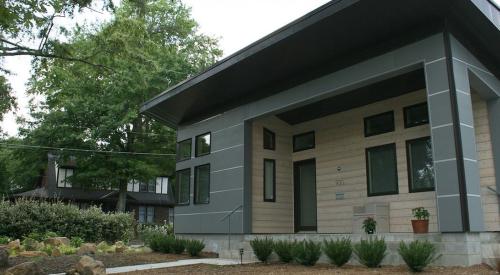|
Builders on the coasts have been well acquainted with the Miami-Dade County and other hurricane-related codes. However, homes nationwide are potentially subject to high winds and nasty weather, particularly in tornado-prone regions.
After all, says Chuck Anderson, Southeast regional director for the American Architectural Manufacturers' Association, "Hurricanes move many miles inland and the requirements for fenestration can still be very stringent in non-coastal areas."
Knowing the codes, the zones, the tests and the benefits of impact-resistant windows are an integral part in buying the right products. Deciphering what all the acronyms mean on the window packaging and understanding the significance of each, however, can be a different story.
TAS 201-94 and TAS 203-94
Dave Olmstead, senior public affairs and code compliance specialist for PGT Industies, is the company's "Code Guru." As such, he's well-acquainted with the specifications mandated in the Florida Building Code as well as other statutes. "Clear as mud, huh?" he asks when questioned about the various tests. Olmstead says manufacturers are required to test to for use in the HVHZ (High Velocity Hurricane Zone) in Florida's Miami-Dade and Broward counties.
TAS 201-94 (TAS 201) is designed to measure a product's resistance to windborne debris. To pass the test, the units must withstand a Large Missile Impact test. After the TAS 201 test is performed, a TAS 203-94 (TAS 203) test follows, which evaluates a product's resistance to cyclic pressure differentials that may occur when a hurricane passes.
American Society for Testing and Materials (ASTM)
When it comes to the ASTM tests, two methods work in tandem: E1996 and E1886. According to the ASTM, E1996 "Provides a basis for judgment of the ability of elements of the building envelope to remain unbreached during a hurricane; thereby minimizing the damaging effects of hurricanes on the building interior and reducing the magnitude of internal pressurization." Don Beltz, director of operations for Architectural Testing, notes the test is equally capable of testing for other storms that generate windborne debris.
E1996's sister test, E1886, measures performance of exterior windows, curtain walls, doors and impact protective systems. The tests blast the window with a 2 by 4 cannon in a test chamber and subject it to a lot of air pressure. The aim is to test the entire window assembly to see if the building envelope could potentially be breached.
American Architectural Manufacturer's Association (AAMA)
This group's test is a fenestration standard/specification that applies to operating, fixed, prime and replacement windows, doors and unit skylights. It establishes material-neutral, minimum and optional performance requirements. It's concerned with factors such as performance grade (PG), design pressure (DP) and related performance ratings.











